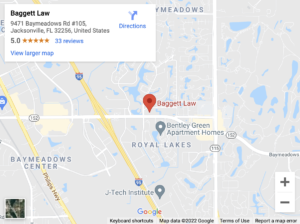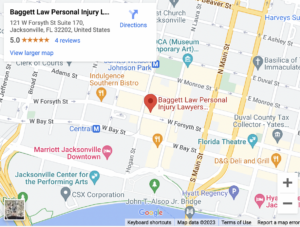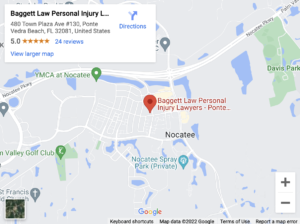
Whiplash happens when your body experiences a rapid acceleration or deceleration. Whiplash injuries commonly happen in car accidents, but they can also occur in slip and falls, elevated falls, and other types of accidents where you stop suddenly.
Whiplash can cause many symptoms, and often, these symptoms clear up in a few weeks. But in some cases, the symptoms of a whiplash injury can cause long-term or permanent disabilities.
Learn about the causes and effects of a whiplash injury and the compensation you can seek for one.
What is the Anatomy of Your Neck?

Your neck must support the weight of your head. At the same time, it must provide the flexibility to turn and nod your head.
To do this, your neck includes seven cervical vertebrae. When these separate bones align, they form a column that supports the weight of your head. But since they are separated by joints, they allow your head to move through a wide range of motion.
Doctors number the cervical vertebrae from top to bottom. The top cervical vertebra, the C1, sits right under your skull. The lowest cervical vertebra, the C7, sits just above your shoulders.
Each vertebra has two parts. A solid body provides strength and support. Wing-shaped processes provide an anchor point for ligaments and tendons. Ligaments hold the vertebrae to each other. Tendons attach neck muscles to your cervical spine.
Discs separate the vertebrae. The discs have a tough outer ring, the annulus, that surrounds a soft interior, the nucleus. These discs cushion your neck. They also give your cervical vertebrae a smooth surface on which to glide.
Your spinal cord runs through the spinal canal of your spine. The spinal canal sits between the body and processes of each vertebra.
The spinal cord connects your brain to your body. As it passes through the spinal canal, it branches off into nerve roots. These nerve roots provide the nerve connections for the different regions of your body. For example, the nerve roots in your neck carry nerve signals to and from your fingers, hands, arms, and shoulders.
Muscles overlay the cervical spine. These muscles support and move your head. They connect your spine to your skull, shoulder blades, and collarbones.
How Do Accidents Cause Whiplash?
As the name implies, whiplash happens when your head and neck whip back and forth. This motion usually results from rapid acceleration or deceleration of your body.
You experience these forces on a small scale when your head moves back into your seat as you accelerate or your head tilts forward as your brake.
As your body accelerates or decelerates, your neck must pull your head to keep it with your body. If you accelerate or decelerate quickly, as in a collision, your neck can experience huge forces that can damage the neck structures.
This happens because the force on your neck depends on both the mass and acceleration of your head. Your head weighs eleven pounds, roughly the weight of ten and a half bottles of water.
When you get hit from behind or land on your back after a fall, your head whips backward. Your head then rebounds forward. Conversely, when you get hit from the front or land on your chest after a fall, your head whips forward before snapping backward.
In both cases, your neck hyperextends as your head pulls it backward and forward. This hyperextension causes whiplash injuries.
What Are Some Whiplash Injury Examples?
Whiplash injuries can take many forms. Some examples of whiplash injuries include:
Neck Strain
Neck strain happens when your accident stretches or tears the muscles or tendons in your neck.
Symptoms of neck strain include:
- Pain
- Inflammation
- Muscle spasms
- Weakness
- Stiff neck
Neck strain usually heals on its own in four to six weeks. During that time, you will need to rest and ice your injury. Your doctor may also prescribe anti-inflammatory drugs to reduce the swelling.
Sprained Neck
You suffer a neck sprain when the ligaments holding your cervical spine get stretched or torn.
A sprained neck can cause:
- Pain
- Swelling
- Bruises
- Instability
- Limited range of neck motion
A sprained neck usually heals without surgery in four to six weeks. Again, your doctor will likely prescribe rest, ice, and anti-inflammatory drugs.
Damaged Neck Disc
When your head and neck whip back and forth, your vertebrae separate and then compress. The compression can damage the discs in your neck.
You suffer a herniated disc when the fibers of the annulus separate. The nucleus protrudes through the annulus and presses on nearby nerve roots.
You suffer a bulging disc when the annulus remains intact but sags. The deformed annulus can also press on nerve roots.
Pressure on the nerve roots can cause symptoms in your upper limbs, including:
- Pain in your shoulders, arms, hands, and fingers
- Numbness or tingling
- Loss of dexterity
Doctors have limited options for treating a damaged disc. They will often recommend anti-inflammatory and pain medication rather than surgery. If they operate, they can remove the disc and either replace it with an artificial disc or fuse the adjacent vertebrae without the damaged disc.
Concussion
A concussion is not a whiplash injury, but the whipping action characteristic of whiplash can cause a mild brain injury.
As your head whips back and forth, your brain gets jostled. The cerebrospinal fluid surrounding your brain cushions it from hitting your skull. But the increased pressure on your brain damages brain cells, leading to a concussion.
What Compensation Can You Seek for a Whiplash Injury?
If your whiplash injury resulted from someone else’s negligence, you can seek injury compensation to cover your economic and non-economic losses.
Economic damages include your medical expenses and lost income. Non-economic damages cover the reduction in your quality of life due to pain, mental anguish, and disabilities.
Whiplash can cause considerable pain, including pain that radiates to your upper limbs. And while you recover from whiplash, your doctor may recommend rest and physical therapy.
During your rehabilitation, you may miss time from work. You may even need assistance with daily activities like dressing, showering, and driving.
To learn about the compensation you can recover for these and other effects of a whiplash injury, contact an injury lawyer from Baggett Law Personal Injury Lawyers for a free consultation at (904) 396-1100.




